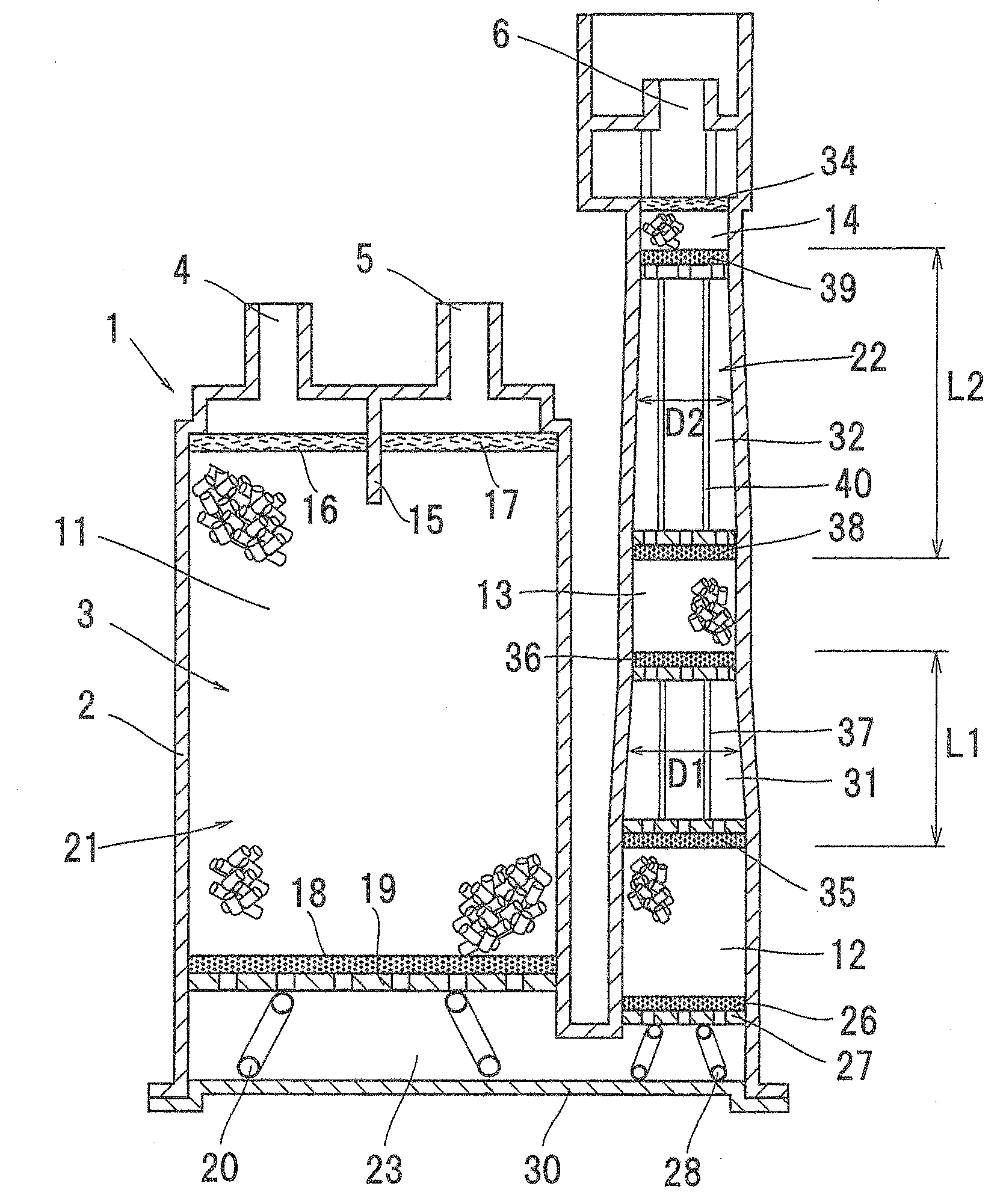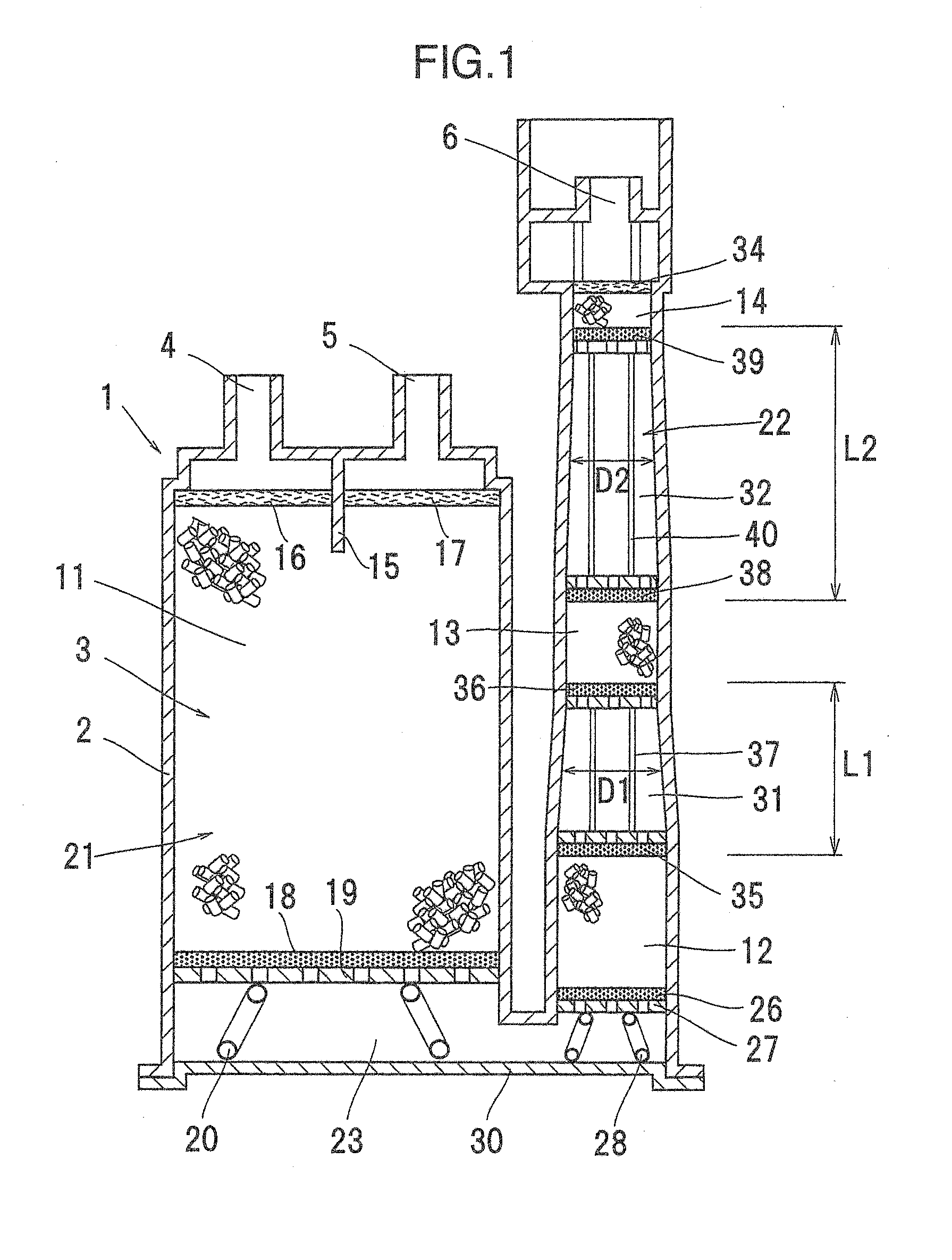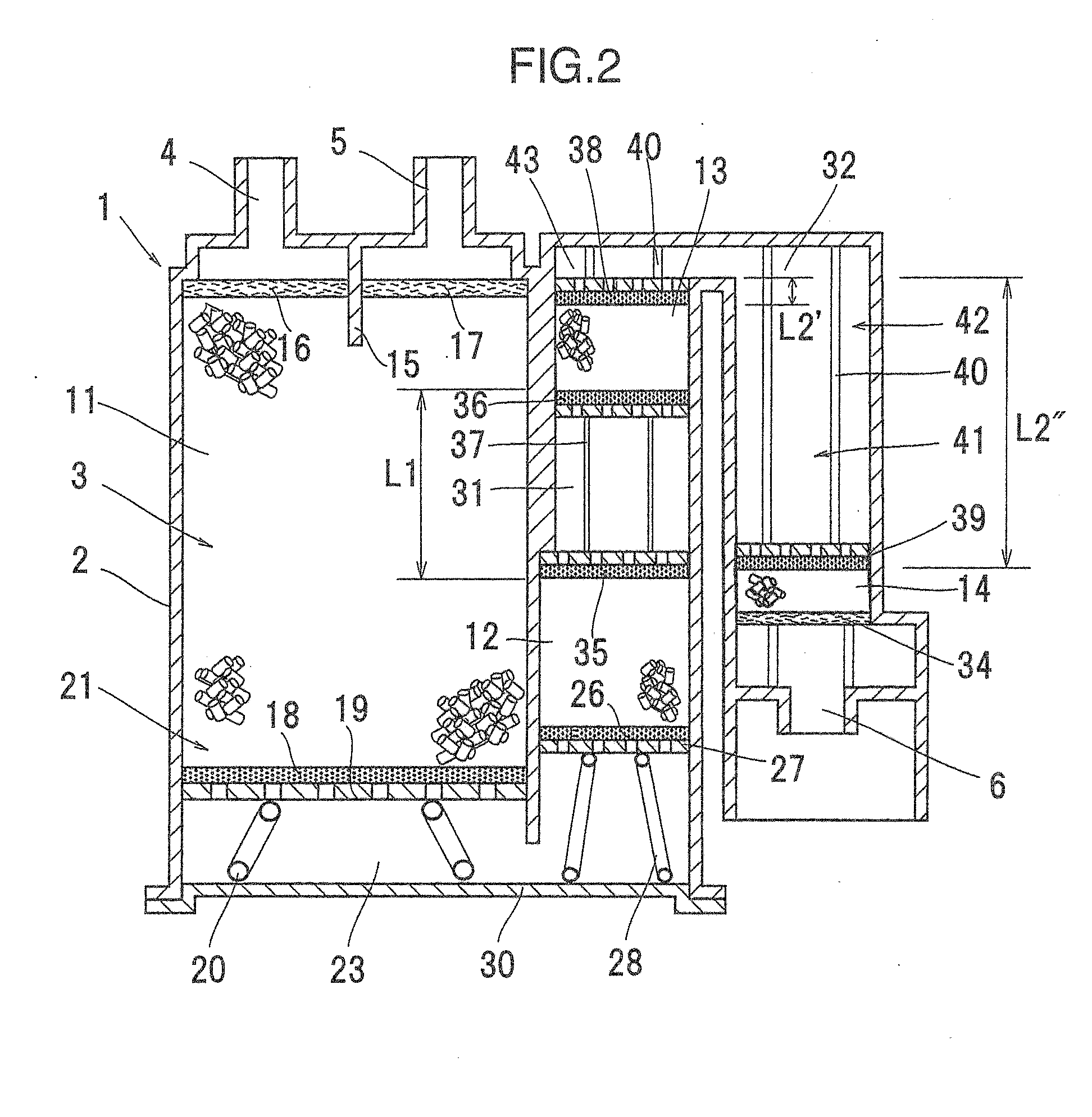Fuel vapor processing apparatus
a technology of fuel vapor and processing apparatus, which is applied in mechanical apparatus, machine/engine, separation processes, etc., can solve the problems of fuel components insufficient desorption and fuel component degradation in the next adsorption layer
- Summary
- Abstract
- Description
- Claims
- Application Information
AI Technical Summary
Benefits of technology
Problems solved by technology
Method used
Image
Examples
embodiment 1
[0021]FIG. 1 shows Embodiment 1 of the present invention.
[0022]As shown in FIG. 1, a fuel vapor processing apparatus 1 of the present invention includes: a casing 2; a passage 3 for a fluid to flow through formed inside the casing 2; a tank port 4 and a purge port 5 formed in an end part on one end side of the passage 3 in the casing 2; and an atmospheric air port 6 formed in an end part on the other end side.
[0023]Four adsorption layers, namely, a first adsorption layer 11, a second adsorption layer 12, a third adsorption layer 13, and a fourth adsorption layer 14, each filled with an adsorbing material capable of adsorbing vaporized fuel components are arranged in series in the passage 3. In this embodiment, activated carbon is used as the adsorbing material.
[0024]As shown in FIG. 1, a first region 21 communicating with the tank port 4 and the purge port 5, and a second region 22 communicating with the atmospheric air port 6 are formed inside the casing 2, and the first region 21 ...
embodiment 2
[0052]While the passage 3 of a U-shape with one turnaround in the space 23 is formed inside the casing 2 in Embodiment 1, as shown in FIG. 2, for example, a passage 41 may be formed in an N-shape with two turnarounds inside the casing 2.
[0053]The structure of the first region 21 of Embodiment 2 is similar to that of the first region 21 of Embodiment 1. In Embodiment 2, a second region 42 is formed in a U-shape with one turnaround in a space 43, and one end of the second region 42 communicates with the space 23, while the other end is provided with the atmospheric air port 6.
[0054]A second adsorption layer 12 and third adsorption layer 13 similar to those of Embodiment 1 are provided between the spaces 23 and 43 inside the second region 42, and the first separation part 31 is provided between the second adsorption layer 12 and the third adsorption layer 13. A fourth adsorption layer 14 similar to the fourth adsorption layer 14 of Embodiment 1 is provided on the atmospheric air port 6...
embodiment 3
[0059]Embodiment 3 differs in the shape of the passage from the passages 3 and 41 of Embodiments 1 and 2; as shown in FIG. 3, for example, a passage 51 may be formed in a W-shape with three turnarounds inside the casing 2.
[0060]The structure of the first region 21 of Embodiment 3 is similar to that of the first region 21 of Embodiment 1. In Embodiment 3, a second region 52 is formed in an N-shape with two turnarounds in spaces 53 and 54, and one end of the second region 52 communicates with the space 23, while the other end is provided with the atmospheric air port 6.
[0061]A second adsorption layer 12 and third adsorption layer 13 similar to those of Embodiment 1 are provided between the spaces 23 and 53 in the second region 52, and the first separation part 31 is provided between the second adsorption layer 12 and the third adsorption layer 13. A fourth adsorption layer 14 similar to that of Embodiment 1 is provided between the spaces 53 and 54. A second separation part 32 is provi...
PUM
 Login to View More
Login to View More Abstract
Description
Claims
Application Information
 Login to View More
Login to View More - R&D
- Intellectual Property
- Life Sciences
- Materials
- Tech Scout
- Unparalleled Data Quality
- Higher Quality Content
- 60% Fewer Hallucinations
Browse by: Latest US Patents, China's latest patents, Technical Efficacy Thesaurus, Application Domain, Technology Topic, Popular Technical Reports.
© 2025 PatSnap. All rights reserved.Legal|Privacy policy|Modern Slavery Act Transparency Statement|Sitemap|About US| Contact US: help@patsnap.com



